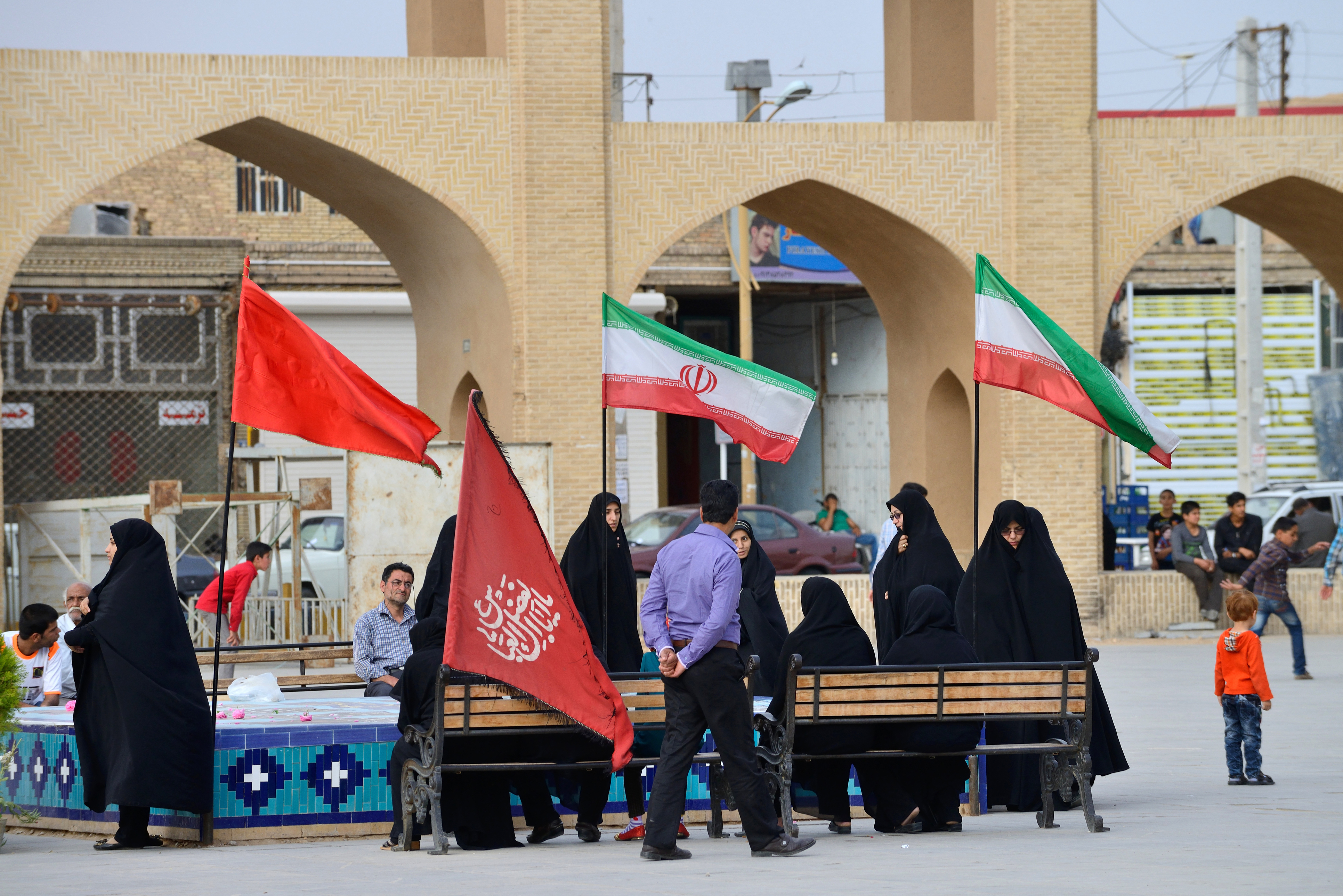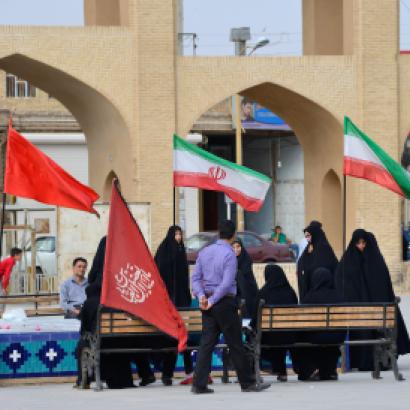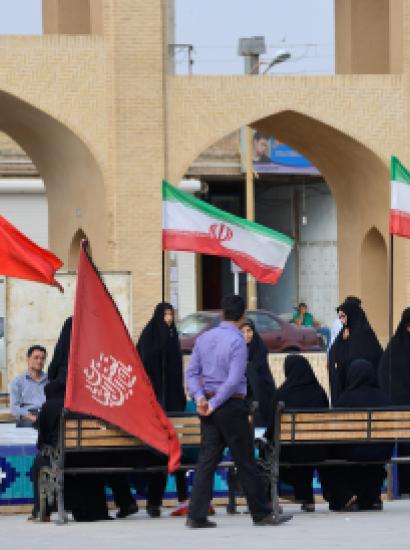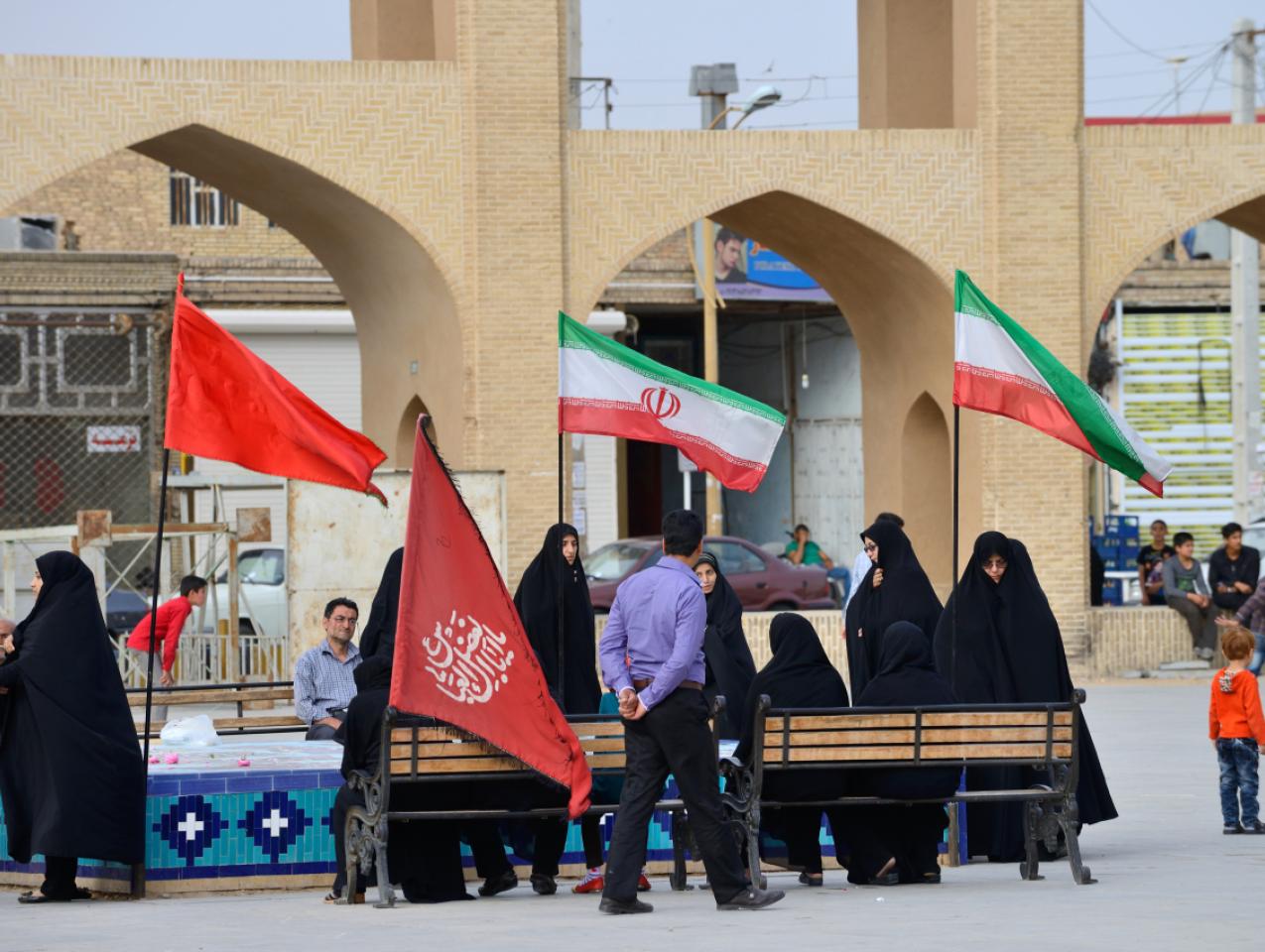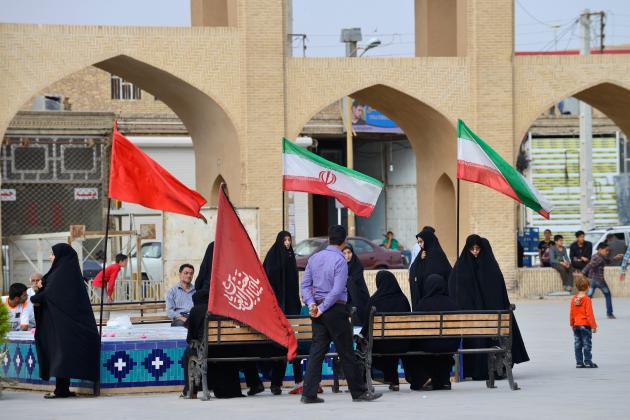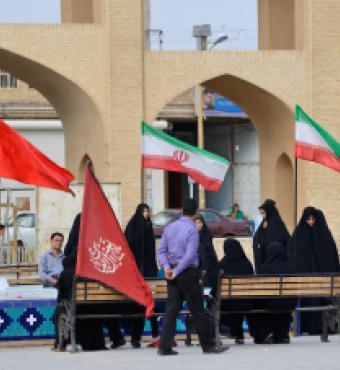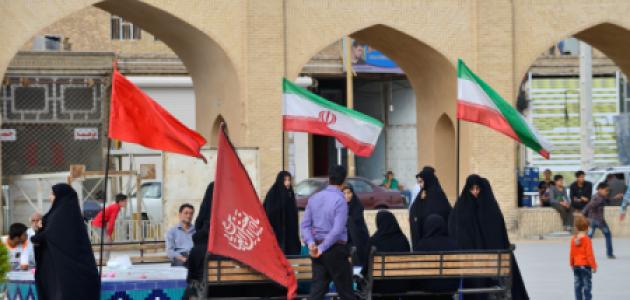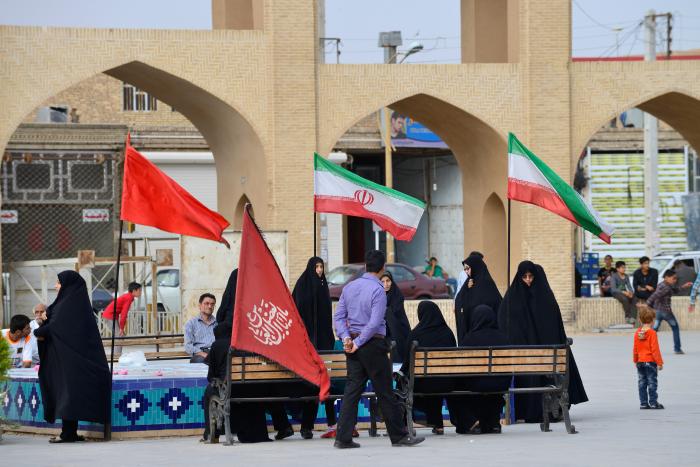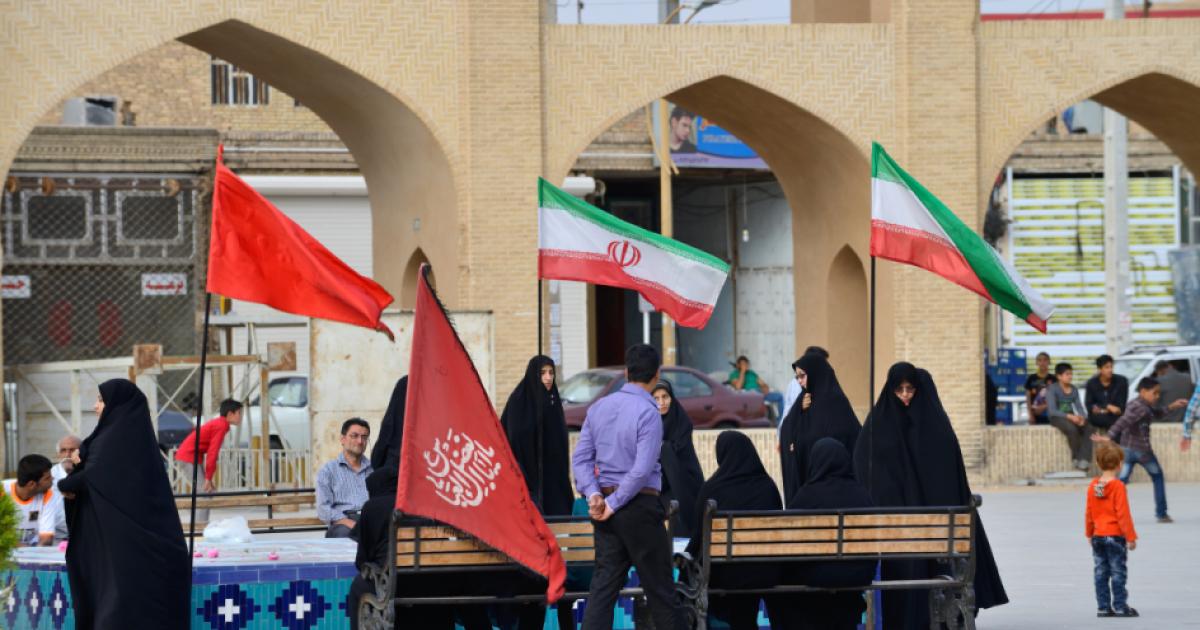- Politics, Institutions, and Public Opinion
The announced defeat of the Syrian rebellion and the Islamic State is favoring the extension of Iranian influence in the Levant. The Iranian corridor between Beirut and Tehran via Baghdad and Damascus is now a reality. Territorial continuity was achieved symbolically at the end of May 2017, when Iranian-funded Shia militias joined on both sides of the Syrian-Iraqi border north of al-Tanf. In Iraq, Iranian allies Syria and Lebanon dominate; people support them out of fear, default, or sympathy. If the West wants to fight against the Islamic Republic's influence in the Levant, it must understand the root causes pushing more and more Lebanese Christians, Iraqi Shiites, and Syrian Sunni Arabs into the Iranian camp.
From the "axis of resistance" to the protection of minorities
The fight against Israel through the "axis of resistance" is still a popular cause in Iran and the Arab countries. It is also a mobilizing slogan for Sunni jihadist groups. In July 2011, Ayman al-Zawahiri justified his call for jihad in Syria with very anti-Israeli rhetoric1:
Our blessed fury and mighty uprising will not calm until we raise the victorious banners of Jihad above Jabal Mukabir in the beloved, usurped Jerusalem.
Whenever a Sunni country proclaims itself the defender of the Palestinian cause—as Egypt under Gamal Abdel Nasser or Iraq under Saddam Hussein—Iran can exploit it to conquer the Arab street. As long as the Israeli-Palestinian conflict persists, the congenital anti-Israeli feeling of the Ayatollah's regime will exert a power of attraction over Sunni Arabs. After the 2006 war between Israel and Hezbollah, Hassan Nasrallah was the most popular personality in the Arab world. In Syria, a few thousand Sunnis even converted to Shiism. Therefore, this parameter should always be taken into consideration, even if it is not the main one.
However, the real cause of Iran's rise in the Levant is sectarian and religious. Paradoxically, theocratic Iran became the protector of non-Sunnis and even secular Sunnis against jihadism.
The main fear of Christians and Shiites in the Levant is to be overwhelmed by Sunni Islam. Although the Sunnis are a minority in Lebanon and Iraq, they consider themselves the only legitimate community to exercise power, since they belong to the majority in the Arab and Muslim world. The concept of minority-majority needs to be assessed throughout the Middle East to understand the fear that drives non-Sunnis and the sense of superiority that drives Sunnis. The ethnic criterion introduces more complexity in the case of the Kurds. Although Kurds are mostly Sunnis in Syria and Iraq, they were marginalized by the Arab Sunnis, too.
A politico-religious hierarchy dating from the Middle Ages persists in the Middle Eastern psyche. The end of the Ottoman Empire changed the system marginally. In Iraq, the British entrusted power to the Sunni Arabs against the Shiite majority, which kept it until the fall of Saddam Hussein in 2003. The Alawite and Druze statelets created by France reintegrated in Sunni Arab Syria in 1936. At that time, Shia minorities were more or less reassured by a fatwa from the mufti of Jerusalem, who recognized them as belonging to Islam. However, it was a very tactical fatwa used to unify the Muslims against the Zionist project in Palestine and French and British colonization. In independent Syria, Alawites and Druze were not considered equal to Sunnis until the Baathist Revolution of 1963. Only Lebanon escaped Sunni rule, since it obtained a separate independence from Syria. The Christians were thus freed from the dhimmitud in which they lived for centuries.2 Lebanon was the only nation in the Arab world where Christians really enjoyed equal rights with Muslims. The massive emigration of Iraqi Christians after 2003 and of half of the Christian community from Syria since 2011 reminds them of the fragility of their situation in Lebanon.
Iran as recourse against radical Islam—and electricity shortages
The failure of the Nasserist or Baathist version of the Arab nationalist development model and the emergence of Saudi Arabia as a geopolitical power led to a re-Islamization of Middle Eastern societies, for which the Islamic State is arguably the supreme stage. For the minorities—Shiites and Christians—the progress of Sunni political Islam is worrisome. The secularism of the Syrian regime, even dominated by the Alawites, was a guarantee of protection for minorities and even secular Sunnis. This explains why Bashar al-Assad still enjoys support in the Syrian population, including among Sunnis. In Lebanon, the danger was embodied by the Islamic State. In addition, Syrian Islamist rebels pushed most of the Christians, however anti-Syrian, to Hezbollah's side, contributing to the election of Michel Aoun as Lebanese president in 2016. Denominational minorities and secular Sunnis are getting closer to Iran because they need protection from the Sunni agenda or from radical Islam. Unfortunately, the West was unable to protect them. We are still very naïve about the politics of Sunni Islam.
The Syrian crisis has thus pushed into the Iranian camp those social categories that were pro-Western but have felt abandoned. In Lebanon, Christians' resentment has only increased since the al-Hariri family seized the country. The construction by Rafiq al-Hariri of the Great Mosque of Beirut, whose size overwhelms the neighboring Maronite cathedral, is the best symbol of a natural hegemony of Sunni Islam in the Levant. Originally, al-Hariri had promised the patriarch that the mosque would be the same size as the cathedral, symbolic of the reconciliation between Christians and Muslims. But he lied. He wanted to build a huge mosque in downtown Beirut to show Sunni domination of the city. Expression of Islamic superiority over Christianity was a common practice in the Ottoman Empire, where any church was dwarfed by the nearby mosque. However, the Lebanese prime minister, friend of the West and representative of a moderate Islam, remained above all convinced of his political and religious superiority.
Rafiq al-Hariri was the Saudis' man. As Lebanon's leader, he was compliant with the Salafists and dismantled the state apparatus. This helped push the Shiites—left behind by this politico-economic system imported from the Gulf—into the arms of Hezbollah. Unlike the Lebanese state, Hezbollah provides its supporters with health services, education, and various material support. In return, they give it their votes and join its troops. In Syria, after six years of war, and in Iraq, after fourteen years of violence, people only aspire to safety and the provision of their basic needs: drinking water, electricity, education, and health. They are ready to give up their political demands in return for the restoration of a protective state.
Rebuilding secular states
Fighting the root causes that allow the Islamic Republic to attract support is a long-term process. As with communism in ruined Europe after the Second World War, Iran prospers on misery and insecurity, plus the fear of Sunni hegemony. The West should therefore encourage Sunni Islam to abandon its domineering character and push Muslim states to delete religious references from their legislation. Significant progress will be made with the end of stipulations that Islam is the religion of the head of state and with the allowance of civil marriage, as is the case in Tunisia. Finally, the state must be sufficiently protective that citizens can rely on it instead of the community. Nonstate actors will then lose their capacity for massive recruitment.
[1] 1 "Al-Qaida Leader Zawahri Praises Syrian Protesters," The Guardian, July 28, 2011, accessed December 4, 2017.
2 Christians and Jews are considered in Islam as dhimmi: “protected people.” In exchange for paying a special tax, they can practice their religion. But in the law, they are not equal to Muslims.







